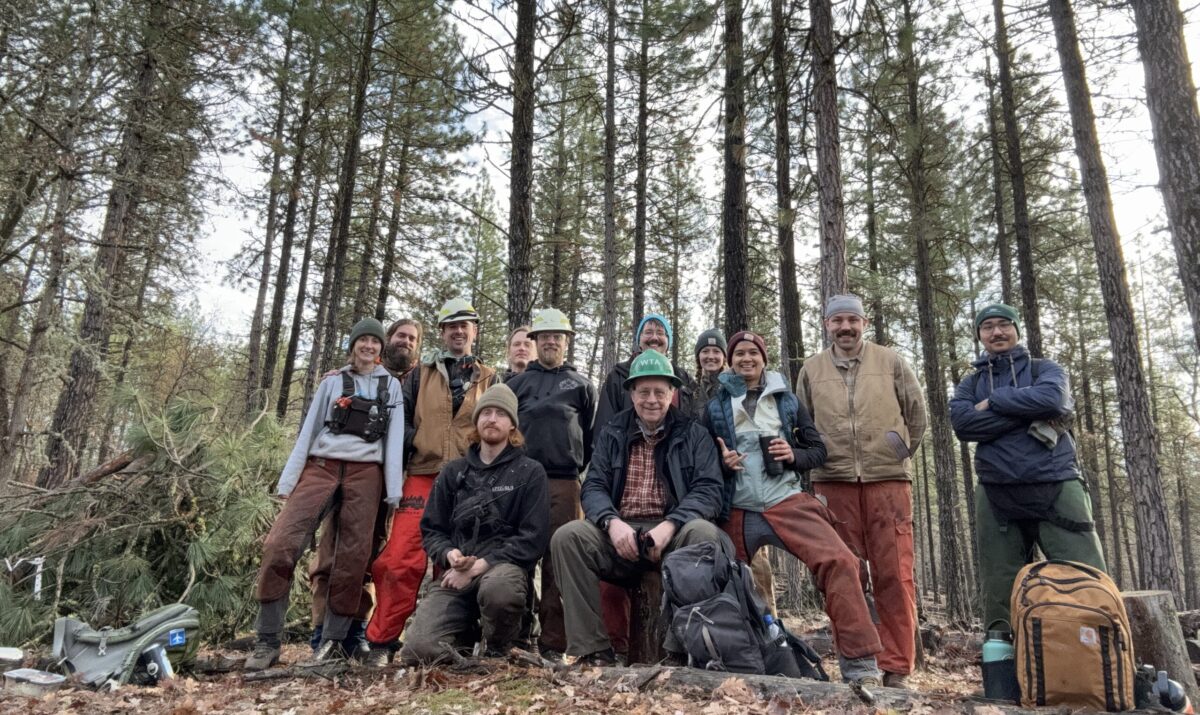Improving Forest Health
Strategic thinning supports wildlife and promotes resiliency to infestation, drought, and fire

Columbia Land Trust recently completed a 12.5 acre thinning project at Bowman Creek Natural Area in the East Cascades. Supported by funding from the National Wild Turkey Federation, our stewardship team, along with partners from Mt. Adams Resource Stewards, and a dedicated group of volunteer site-stewards, worked together to reduce the density of conifer trees and “release” oaks from conifer encroachment in an especially thick stand of ponderosa pine and Douglas fir on the property.
The goal of this project is to facilitate the development of mature, open and patchy oak-pine woodland forest that supports diverse native plant communities and high-quality wildlife habitat. Thinning treatments benefit wildlife in a variety of ways, like increasing the amount of sunlight that reaches the forest understory, stimulating native plants to grow in places that were previously too shaded and providing more forage for pollinators, mule, wild turkey, and black-tailed deer.
The project also focused on releasing Oregon white oaks (Quercus garryana) from being overtopped by faster growing conifers which protects and promotes acorn production, increasing nutritious food resources for endangered western gray squirrels (Sciurus griseus), turkeys, black bears, and more.
Reducing stand densities also reduces competition for limited water resources and increases resiliency to drought and bark beetles, which in turn protects western gray squirrel nests—the majority of which are made in the canopy of live conifer trees.
Our stewardship team is currently working on the next phase of restoration projects for this Bowman Creek, including the possibility of using prescribed fire to improve forest health and wildlife habitat.